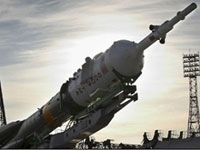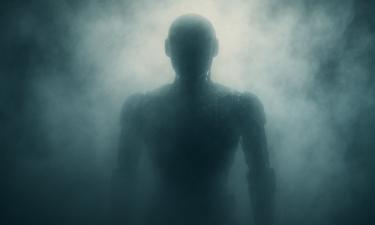Soyuz Booster Rocket 100 Times More Reliable Than US Shuttles
Richard Garriott, a videogame developer, who once boarded Russia’s Soyuz rocket for a space flight said that the Russian-made ship was much more reliable than its foreign analogues.

Garriott, whose father is a former NASA astronaut, paid $30 million for a flight to the iInternational Space station. He said in a televised conference that Soyuz was 100 times more a reliable spacecraft than USA’s shuttles.
On October 24, 2008, Russian cosmonauts, ISS Crew 17 Sergei Volkov and Oleg Kononenko, space tourist Richard Garriott, landed safely aboard Soyuz TMA-12 capsule in Kazakhstan. They were lifted to the Kazakhstan Baikonur space center by helicopter, and then flew to Zvezdny Gorodok (Star City), Moscow Region.
Sergey Krikalev, the director of the Cosmonaut Training Center, made an announcement, which became a disappointment to other wealthy individuals interested in making a flight into space.
“As long as we had vacant seats on board the Soyuz booster rockets, space tourists could join the crew to fly to the ISS and back. Now, since the crew of the ISS will consist of six people, there will be no vacant seats on board Soyuz during several upcoming space flights,” the official said in November 2009.
The Soyuz spacecraft is launched by the Soyuz rocket, initially as part of the Soyuz program, and also as part of the unmanned Zond program. Soyuz spacecraft were used to carry cosmonauts to and from Salyut and later Mir Soviet space stations, and are now used for transport to and from the International Space Station. The International Space Station maintains docked Soyuz spacecraft at all times to be used as escape craft in the event of an emergency.
In 2004, Russian space officials announced that the Soyuz will be replaced by early 2011 with the new Kliper and Parom spacecrafts. However, since then the Kliper appears to have been indefinitely postponed due to lack of government funding, and it has been announced that the Soyuz will receive an upgrade to make it suitable for up to one year in space, as well as new digital interior displays and updated docking equipment. This new version, known as Soyuz TMAT, could enter service around 2010.
During his spaceflight, Garriott took part in several education outreach efforts. He is an Amateur Radio Operator, and during his stay on the International Space Station, communicated with students and other Amateur Radio operators using Amateur Radio. Garriott also transmitted photographs using the ARISS SSTV amateur radio system. Garriott also worked with the Windows on Earth project, which provides an interactive, virtual view of Earth as seen from the ISS. Garriott used Windows on Earth software to assist in the selection of locations on Earth to photograph, and the public were able to use the same online tool to track the ISS and see the view Richard was experiencing out an ISS window. Richard's photographs, along with images taken by his astronaut father Owen Garriott in 1973, will be available to the public through Windows on Earth, adding a personal element to studies of Earth and how Earth has changed over time.
Utro
Subscribe to Pravda.Ru Telegram channel, Facebook, RSS!





